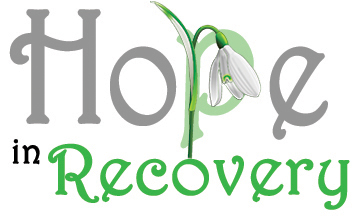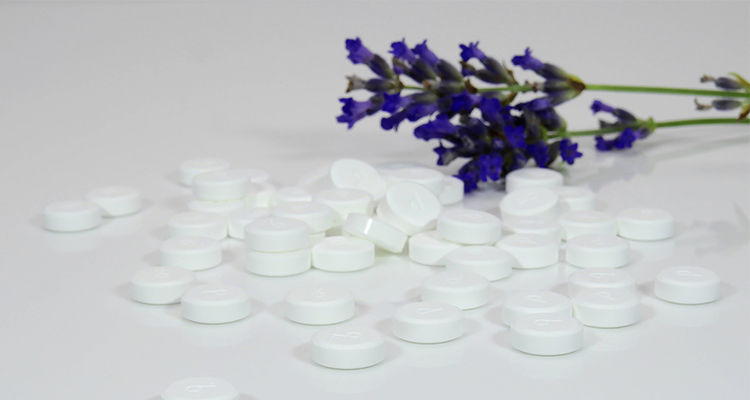“Smells are surer than sights or sounds to make your heartstrings crack.”
— Rudyard Kipling
Few would argue that a whiff of fresh coffee or of an orange being peeled evokes swift reactions and emotions. Whether it is pleasant or somehow tied to unpleasant associations, the sense of smell — or olfaction — is not something we have much control over. Indeed, the science of smell is a topic of intense research. As recent as 2004, the Nobel Prize was awarded to a pair of scientists who compiled and cracked some of the mystery surrounding olfaction — connecting odorant receptors in the nose with specific receptors in the brain. There is still much to learn.
Why is the sense of smell so powerful? Without getting too technical, the pathway of transmission of odor bypasses our control. We are affected before we know it! Simply put, odorant receptors in our nose pick up the scent, transmit that information via pathways that bypass the thalamus (where motor skills, language, touch, memory and pain perception intersect) and travel straight to our cerebral cortex. Our amygdala is also involved — that almond-shaped organ that is highly active during emotional trauma, anger and stress.
POSSIBLE CONNECTION
 What is the connection or possible connection between aromatherapy and relief of suffering from dependence on/addiction to opioids? Let’s begin by exploring pain.
What is the connection or possible connection between aromatherapy and relief of suffering from dependence on/addiction to opioids? Let’s begin by exploring pain.
Most of us would agree that acute pain is very receptive to the use of opioid pain relievers. Anyone who has ever had an accident and ended up in the emergency room could attest to the relief of receiving an appropriate dose of narcotic pain reliever. And this is nothing new — opium has long been used to relieve uncomfortable symptoms. Morphine, Dilaudid and fentanyl are some of the most common legalized derivatives of opium and are used in modern medicine to relieve and control severe pain. Most of us would agree that we need pain relievers for acute pain — we would be in a terrible fix without them.
But in order for the body to be able to respond to and function while on opioids, something known as tolerance must occur. Tolerance is the body’s way of moderating the negative effects of opioids — sedation, nausea, apnea (slowed breathing) and confusion. If a body does not develop tolerance, then a substance like an opioid cannot be used. But most people do develop tolerance and, within just a few doses, are able to experience relief without debilitating side effects. If treatment or use of opioids must last for more than a few days, dependence develops. Dependence, as it relates to opioid use, means that now the body will require the substance, usually in increasing doses, in order to feel normal.
Let’s talk a little more about dependence because this is where things get tricky. Dependence simply means that we are in need of something in order to feel good. We can “depend” on a cup of coffee or sugary foods or a certain amount of exercise in order to feel normal and, when we cannot get those things, we will feel off balance and perhaps even unwell. Addiction works the same way. Who hasn’t heard themselves or someone else say “I have to get my fix” as they walk into Starbucks or Dunkin Donuts? Addiction to opioids simply means that the “fix” is an opioid derivative and that it is either not legal or available by prescription only. If pain and unpleasant sensations persist after the prescription runs out or illegal supply dwindles, then withdrawal begins.
THE SCIENCE OF ADDICTION
According to research, addiction begins in the midbrain. *GABA-ergic neurons are suppressed by opioids, and feelings of euphoria and wellbeing kick in (GABA stands for Gamma-Aminobutyric acid.) *GABA is a substance that works to moderate us and settle us down — it suppresses euphoria — the very feeling that opioids are so good at giving.
Since GABA is suppressed, pleasure circuits fill with the neurotransmitter, dopamine. Dopamine is best known as a “reward” chemical, and scientists say that dopamine released into the brain causes us to experience pleasure to one degree or another. Dopamine affects several areas including the nucleus accumbens, and this triggers happiness. In the amygdala, the surge of dopamine relieves anxiety and stress.
GABA neurons are suppressed, but they are not destroyed and, as with other systems in the body, the response to resistance is increased production and effort. Therefore, in response to suppression, production of GABA-ergic neurons INCREASES! Withdrawal of the opioid then removes inhibition of GABA, and it floods out causing tremors, jitters, shakes, headaches, and general misery for the brain and nervous system. Please remember that I said this is simplified — there is more to this process but this is basically what occurs.
But not everyone who develops dependence develops addiction. This, according to researchers, may have to do with the relationship between addiction and mood disorder. There are even theories that say that connection — having meaningful relationships and ties — is the opposite of addiction and that treatment programs that promote relationship and connection can be more successful.
This is where I believe the use of alternative and complementary therapy in the clinical setting has wonderful potential. Because I am an aromatherapist and have some knowledge of this modality, I feel I can speak to and hope to develop research in this area.
In a study published in the Journal of Medicinal Food, findings show promise that essential oils may help to rehabilitate brain dopamine function (Choi et. al. 2015). Another study available on PubMed discusses efficacy of Rosmarinus officinalis (rosemary) used as an herbal preparation as an adjuvant in opium withdrawal treatment program (Solhi et. al., 2013).

At this time, studies involving the use of pure essential oils and aromatherapy in the treatment of opioid addiction in the U.S. are virtually non-existent. But I believe that the potential for benefit exists in many areas where care of those whose lives are ravished by addiction are treated. These venues include outpatient clinics, mental health facilities and inpatient acute care.
Could Lavandula angustifolia (lavender), Citrus sinensis (sweet, wild or blood orange) and lovely blends using Piper nigrum (black pepper), Rosmarinus officinalis (rosemary) be used to support recovery emotionally and physically? I believe that it is time for us to find out.
WHY AROMATHERAPY?
Several good reasons to try aromatherapy exist, and these reasons have to do with common use, cost and availability. While a modality such as aromatherapy may not be able to replace the use of buprenorphine (Suboxone), it could be utilized as a soothing adjuvant that could serve as a connection between recovering addicts, their families and healthcare providers.
One reason to begin to fund research related to aromatherapy and opioid addiction is availability. There has never been a time in modern history when so many people are using essential oils in their own homes. The internet is full of claims and testimony about symptom relief and improved quality of life as a result of adding aromatherapy and essential oils to life. Healthcare is making timid forays into the use of essential oils. But in states like West Virginia, clinical use and research are very limited.
Another reason to try aromatherapy before, let’s say, acupuncture is cost. Many of the essential oils that are effective are relatively inexpensive, and a little goes a very long way. Sustainability of resources must always be considered, and the essential oils that can be used for anxiety and distress are varied and mostly common.
 Finally — availability. Many rural areas experience a lack of resources when it comes to face-to-face services such as massage therapy, yoga and acupuncture. Essential oils are available in the most abundant supply online. Credible, and often free, basic education is also available online. Essential oils are also relatively portable — in the form of patches and inhalers — and can be used discreetly.
Finally — availability. Many rural areas experience a lack of resources when it comes to face-to-face services such as massage therapy, yoga and acupuncture. Essential oils are available in the most abundant supply online. Credible, and often free, basic education is also available online. Essential oils are also relatively portable — in the form of patches and inhalers — and can be used discreetly.
CONCLUSION
Currently, studies are being conducted exploring the use of acupressure, acupuncture, massage and music therapies. Support for those suffering from opioid addiction and withdrawal is necessary. Use of pharmaceuticals and psychiatry is ongoing and constitutes the area of most research and funding. Use of aromatherapy could prove promising — I believe many may join as we begin to explore our options.
References
Choi, M. S., Choi, B., Kim, S. H., Pak, S. C., Jang, C. H., Chin, Y….Koo, B. (2015). Essential oils from medicinal herbs upregulate dopamine transporter in rat pheochromocytoma cells. Journal of Medicinal Food, 18(10), Retrieved from https://www.liebertpub.com/doi/10.1089/jmf.2015.3475
Solhi, H., Salehi, B., Alimoradian, A., Pazouki, S., Taghizadeh, M., Saleh, A. M., Kazemifar, A. M. (2013). Beneficial effects of Rosmarinus officinalis for treatment of opioid withdrawal syndrome during addiction treatment programs: A clinical trial. Addiction & Health, 5(3-4), 90–94. Retrieved from https://www.ncbi.nlm.nih.gov/pmc/articles/PMC3905473/
• Marni Reven is a master’s-prepared registered nurse with over 28 years of experience. She is a registered aromatherapist and owner of MoMa Aroma LLC, specializing in consultation and education in aromatherapy. Marni is an active member of the Alliance of International Aromatherapists where she is part of the research and media committees and serves as the state representative for West Virginia. She is passionate about health and wellness and serves as a founding board member for WV Wellness Inc. She is a board certified nursing staff development specialist and is a seasoned educator in both clinical and academic settings.


